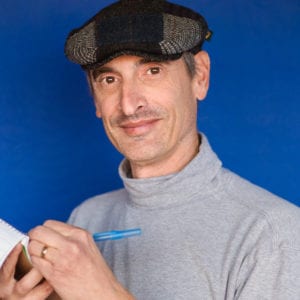Human Resources
Lee Chottiner
I am neither a rabbi nor a cantor, but this month during Selichot, I got a taste of what it’s like to lead services in their shoes, during a life-altering pandemic.
Selichot, as you know, is the service of forgiveness or pardon that is held on the Saturday evening before erev Rosh Hashanah. The traditional beginning of the High Holy Day season, it is the time when Torah covers are changed to holiday whites, the al chet is chanted for the first time during the Days of Awe, and many Jews hear their first sustained shofar blast of the season.
For some clergy, Selichot this year also marked the first time they have led a service in their synagogues since March, when the country began shutting down for the coronavirus.
Rabbis and cantors in Louisville and elsewhere took to their bimas for the service, which must have felt like an awakening of sorts. After all, so much time has passed while their darkened sanctuaries sat unused.
But this year was only a partial awakening.
While some synagogues, mostly Orthodox, had already resumed in-person services, most Reform and Conservative synagogues have remained closed, holding virtual services instead. Even as their clergy returned to their buildings for Selichot, they still led the services on Zoom, Facebook or YouTube, chanting the liturgy and performing the rituals in otherwise empty sanctuaries.
That’s where my experience comes in.
My wife, Rabbi Beth Jacowitz Chottiner of Temple Shalom, had asked me to join her as vocalist for Selichot this year. It wasn’t a new experience for me. I can carry a tune, and I know the liturgy well enough to stay out of trouble, so I have worked with her before, both here and at her last pulpit in Wheeling, West Virginia.
Still, standing on the bima, singing to row upon row of empty seats, knowing full well that worshippers were nevertheless watching me from somewhere in cyberspace, felt awkward. Sometimes, if the faceless members were unmuted, I could even hear them.
The only other souls in the sanctuary were the past president, who ran the production equipment, and my daughter, who helped change a Torah cover. That was it – the entire live, in-person congregation.
The only comparison I can make is with C-SPAN’s televised coverage of Congress, when members of the House and Senate give impassioned speeches from the wells of their chambers with few, if any, of their colleagues there to listen, save for the presiding officers.
By no means was this Selichot experience the same as holding virtual services from the rabbi or cantor’s home during Shabbat, as we have done all spring and summer. In those cases, the clergy can stand or sit in front of their computer screens, communicating with their congregants. They can watch them stand for Shema, unmute for the Mourners Kaddish or lead some English reading. It’s not the total service experience, but at least it’s interactive.
When you’re standing on the bima, though, leading services for empty seats, you are deprived even of that.
So it doesn’t surprise me that some clergy have told me how they struggle with reaching worshippers with whom they cannot share physical space. Like actors, singers, comedians and politicians, rabbis and cantors also thrive on audience reaction. When there is none, they must somehow compensate.
Now, thanks to my Selichot experience, I have had a taste of their challenge – only a taste. Selichot was merely a prelude to the High Holy Days. Imagine doing this on Rosh Hashanah (days one and two) and Yom Kippur (Kol Nidre, Yizkor, Neilah). Imagine the sanctuaries just as empty but the virtual congregations many times larger – and still invisible.
Try to imagine it. I cannot. But many of our clergy have now experienced just that.
I hope you signed on to High Holy Day services this year, and I hope you found them as meaningful as possible under the circumstances. Even if you didn’t, though, take a moment to consider the rabbis, cantors, volunteers and professional staff who worked hard to bring these services to you. Trust me, it wasn’t easy.
(Lee Chottiner is the editor of the Jewish Louisville Community.)



